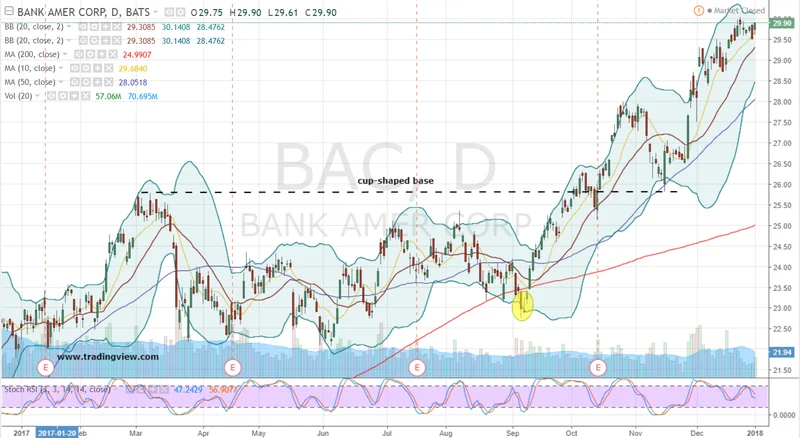The Signal Hidden in the Noise
I spend my days thinking about the future. I look at lines of code, at neural network diagrams, at the physics of quantum computing. But sometimes, the most powerful signals about where we're headed don't come from a lab at MIT; they come from the ledger of a bank. And the Q3 2025 earnings report from Bank of America—covered in reports like Bank of America tops expectations on 43% surge in investment banking revenue—isn't just a financial document—it's a high-resolution snapshot of the American economic engine, and folks, that engine is starting to roar.
Forget the headline numbers for a second, even though they’re impressive. Earnings per share of $1.06 smashing the 95-cent estimate. Revenue of $28.1 billion beating the street by more than half a billion. These are the kinds of figures that make traders happy, and the stock’s subsequent rally reflects that. But that's the effect, not the cause. What I see when I look at this data is something deeper. It’s a story about the return of a crucial, almost intangible element to our economy: audacious confidence.
For months, the narrative has been dominated by uncertainty—geopolitical chess moves, tariff threats, whispers of recession. Corporates were sitting on their hands, waiting. But something clearly broke loose in the third quarter. When I saw that 43% surge in investment banking revenue, I honestly just sat back in my chair. That's not a number; that's a signal flare shot into the night sky. It tells us that the dealmakers are back at the table. Mergers are being forged, IPOs are being launched, and capital is flowing again. This is the financial lifeblood of innovation. It’s the money that funds the crazy ideas, that scales the promising startups, that allows big companies to make the transformative acquisitions that define the next decade. What does this sudden, explosive return to deal-making tell us about the collective psyche of the market? Is this the moment the dam of pent-up ambition finally broke?
This surge in investment banking is like watching a city's power grid suddenly surge to 110% capacity. It’s the most visible and exciting part of the system coming alive. It means new buildings are being lit, new factories are humming to life, and the entire metropolis of our economy is buzzing with renewed energy. But a city can’t run on spectacular surges alone. It needs a solid, reliable, and increasingly smart infrastructure humming silently in the background.

The Quiet Upgrade to the Operating System
That brings us to the less glamorous, but arguably more important, part of Bank of America’s story. Tucked away in the data are metrics that speak to a profound, quiet upgrade happening within the core of our financial system. Look at the bank's efficiency ratio, which came in at 61.4%, significantly better than the 63.1% Wall Street expected. The efficiency ratio—in simpler terms, it’s a measure of how much it costs the bank to make a dollar—is a critical indicator of operational health. Improving it isn't easy; it requires a relentless focus on optimization.
This is where the technologist in me gets really excited. This isn't just about cutting costs. It's about becoming smarter. It’s the result of digitization, of automating back-office processes, of using data analytics to make better decisions. Think about it, a fractional improvement in a system that processes trillions of dollars isn't just a small tweak, it's a fundamental upgrade to the entire economic operating system that frees up immense capital and brainpower for more productive uses—it’s the kind of subtle but profound shift that truly changes the world.
And look at the asset quality. Analysts were bracing for non-performing loans—loans that are in or near default—to hit around $6.66 billion. The actual number? $5.35 billion. That’s a massive beat. This isn't just luck. This is the mark of a system that is getting incredibly good at understanding risk. It’s the application of machine learning models and vast datasets to predict problems before they cascade. The bank isn't just a vault for money anymore; it's becoming a data-driven intelligence engine.
This combination is what’s so powerful. We have the spectacular, confident energy of investment banking being supported by a stronger, leaner, and smarter core operation. It’s one thing to have a powerful engine; it’s another to have it bolted to a chassis that’s been reinforced and upgraded for high performance. This dual strength suggests a resilience that goes far beyond a single quarter's results. But as we build these ever-smarter financial machines, running on algorithms we barely understand, what new responsibilities must we consider? How do we ensure the human element of judgment isn't lost in a sea of perfect data?
A Barometer of What's Next
When you put it all together, the picture becomes incredibly clear. Bank of America’s stellar quarter isn't just good news for its shareholders. It’s a diagnostic reading of the entire system. It shows us that the "animal spirits" of capitalism—the risk-taking, the deal-making, the forward-looking investment—are surging back. And crucially, this creative energy is being channeled through a financial infrastructure that is becoming more robust, efficient, and intelligent than ever before. This isn't a fluke. It's a sign that the American economic engine is not only revving again, but it’s been seriously upgraded under the hood. And that tells me the road ahead is going to be very interesting indeed.
